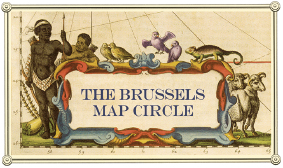Exploring the potential of digital historical maps for landscape history: crowdsourcing the Arenberg historical map collection.
For a long time historical maps have been cherished as objects of great value and beauty, illustrating the evolving representation of the world, cities and (rural) landscapes. Recently, they tend to be seen as more than mere illustrations. Up until now, however, preparing historical maps and building spatial databases of directly deductible information to allow the use of these maps as primary sources for fundamental research, was a very labor-intensive process. This is caused mainly by the necessity of two time-consuming preparatory steps that have to be undertaken to (pre-)process historical maps: 1) the georectification (overlay of historical maps with present-day situation) and 2) the spatial annotation of toponyms (transcription and localisation of place names). Grasping the full opportunities of the recently started close FED-tWIN-co-operation between the History Department of the University of Antwerp and the Belgian State Archives, this project aims to offer an alternative to solve the bottle-neck in the processing and use of digital historical maps: the development of a web-application for crowdsourcing both the georectification and spatial annotation of historical maps. Teaming up with ICT-partner Webmapper, ca. 3 000 high-resolution scanned historical maps from the Arenberg collection, digitized by and held at the Belgian State Archives, will be opened to the 'crowd' in order to establish a spatial database of up to (or over) 100 000 toponyms. Once completed, this database serves a threefold research objective: 1) fundamental research on landscape history based on 'big data of the past', in this case large datasets of toponyms; 2) using local toponyms as a way to include other sources for spatial research and 3) an exploration of the possibilities and limitations of crowdsourcing when scaling-up the research in the coming years. Read more.
Posted on
